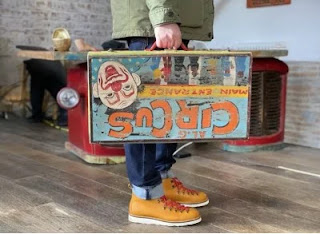The Truth About Breastfeeding Chairs: Do You Really Need One?
When you’re prepping for a new baby, it’s easy to get overwhelmed by all the gear. Cots, prams, baby monitors—but there’s one item that quietly earns its place in the nursery: the breastfeeding chair.
It may seem like a luxury at first glance. After all, you could feed your baby in bed or on the sofa, right? Technically, yes. But if you ask mums who’ve been there, they'll tell you—a good breastfeeding nursery chair isn’t a nice-to-have. It’s a sanity-saver.
Let’s break down what makes breastfeeding chairs so valuable, what to look for, and whether they really deserve a spot on your baby essentials checklist.
Why Comfort Matters More Than You Think
Breastfeeding (or bottle-feeding, for that matter) isn’t just a quick five-minute task. Some feeds last up to an hour. And they happen often—especially in those first few months when cluster feeding kicks in.
Now picture doing that six times a day in a stiff dining chair. Or slouched sideways on a lumpy sofa with no arm support. It doesn’t take long before your back aches, your wrists hurt, and your neck is screaming for mercy.
That’s where a dedicated nursing chair earns its keep. The right one will:
Support your posture – so you’re not constantly straining your back or shoulders.
Provide armrests – vital when holding a baby for long stretches.
Offer gentle motion – many nursery chairs rock or glide, helping soothe both baby and you.
Give you a calm, defined space – a mental cue that it's feeding time, not laundry or emails time.
Styles of Breastfeeding Chairs: What Are Your Options?
You’ve got choices. A few, in fact—and each has its pros and quirks:
🪑 Glider Chairs
These are modern favourites. They glide smoothly back and forth (unlike old-school rockers that need more floor space). Many come with matching ottomans for leg support.
Pros: Quiet motion, easy to get in/out of, often cushioned and spacious.
Watch out for: Cheaper models can squeak, and cleaning can be a pain if the fabric isn’t removable.
🪑 Rocking Chairs
Classic wooden rockers with a vintage vibe. Less padding but full of charm.
Pros: Timeless style, small footprint, great for passing down generations.
Watch out for: Can be a bit too upright for some, and less cozy if you’re recovering from birth.
🪑 Recliners
Think of these as your throne. Adjustable angles, footrests, often wider than average.
Pros: Total relaxation mode, perfect for longer night feeds or contact naps.
Watch out for: They’re bulky—make sure your nursery (or living room corner) can handle the size.
🪑 Accent Armchairs
Surprised? A sturdy, well-padded armchair can double up as a feeding chair if you’re on a tight budget or prefer something stylish.
Pros: Multipurpose, blends with decor, easy to reuse later.
Watch out for: No motion, and some might lack the lumbar or arm support needed for those early weeks.
What Should You Look for in a Breastfeeding Chair?
It’s not just about how it looks—though yes, style does matter! Here’s what actually counts:
Comfort: Sit in it (if you can). Does it feel natural? Can you imagine spending hours in it?
Back support: Essential for night feeds or post-C-section recovery.
Arm height: You want your arms to rest naturally while holding baby—not hovering awkwardly.
Ease of cleaning: Babies spit up. It happens. Removable or wipeable covers = less stress.
Quiet motion: Avoid anything creaky, especially if you’ll be using it during naps.
Size: Make sure it fits through doors and doesn’t overwhelm your nursery.
Where Should You Put It?
A quiet, dim corner of the nursery is ideal—somewhere away from distractions and with space nearby for muslin cloths, burp rags, and water bottles (hydration is key when breastfeeding!).
If your nursery is tiny, no worries—many parents tuck a chair into their own bedroom for the first few months, then move it once baby transitions.
Do You Really Need One?
Let’s be honest—it depends. Not every parent swears by one. Some mums feed perfectly fine in bed, and others prefer feeding cushions on the sofa.
But ask around and you’ll hear a theme: when the 3am feed rolls around, having a comfy, supportive chair makes all the difference. It’s not just about the baby—it’s about looking after you, too.
Plus, once baby is weaned, the chair becomes a perfect storytime seat or a cozy reading nook.
So is it essential? Not strictly. But is it a game-changer? For many families, absolutely.
Questions and Answers
What’s the best chair for breastfeeding?
The best chair is one that supports your back, has good armrests, and fits your space. Gliders and recliners are popular choices for comfort and motion.
Can I use a regular armchair for nursing?
Yes, as long as it offers enough support and you’re comfortable. Adding cushions can help tailor it to your body.
Are rocking chairs better than gliders?
It depends on personal preference. Gliders offer smoother motion and usually more padding. Rockers bring classic style and a compact frame.
Do I need to buy an ottoman too?
Not essential, but helpful—especially during long feeds when propping your feet up can relieve pressure from your lower back.
How long will I use a nursing chair?
Most parents use it daily for the first 6–12 months. After that, it often becomes part of the bedtime routine for stories and cuddles.




Comments
Post a Comment